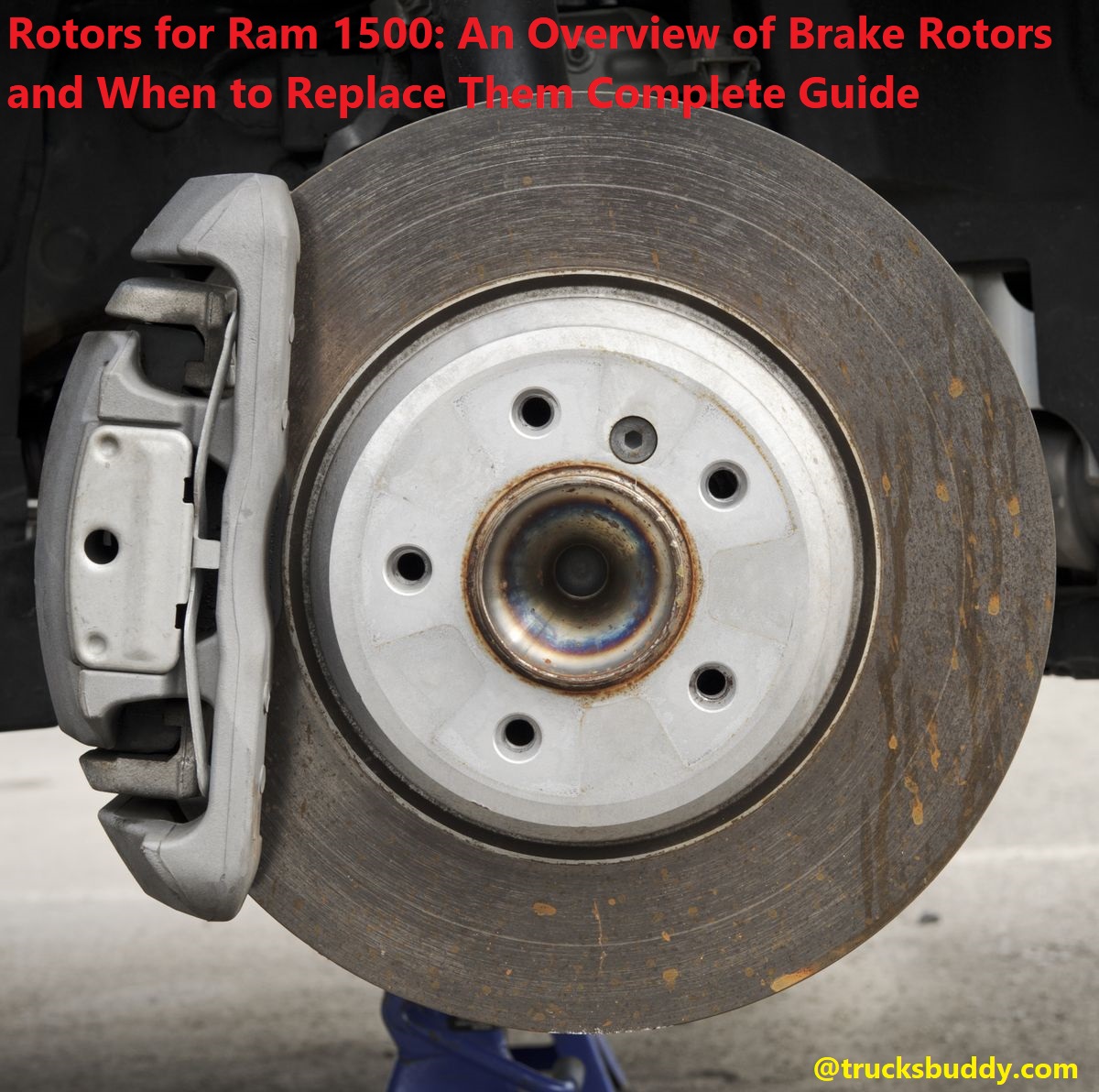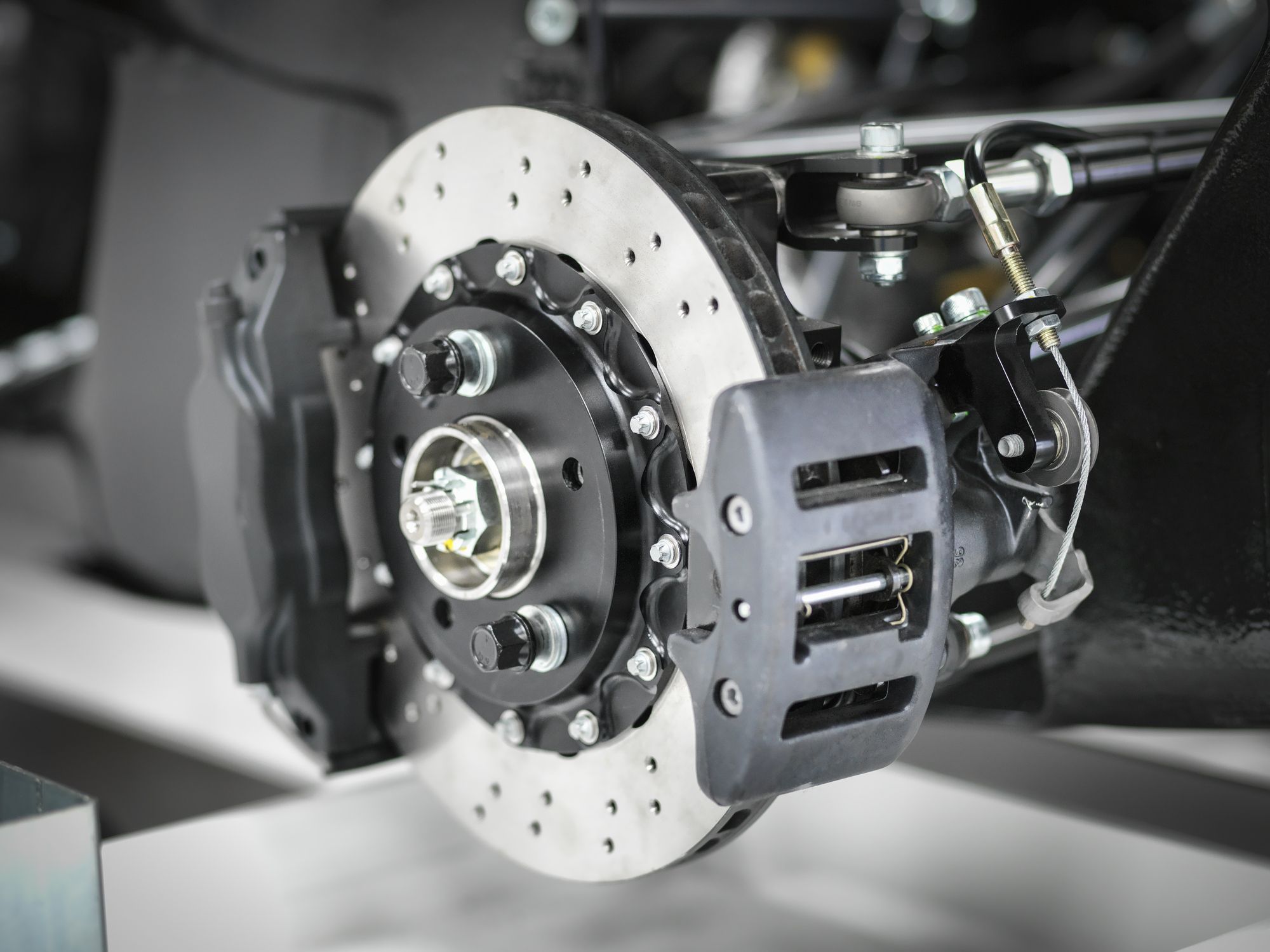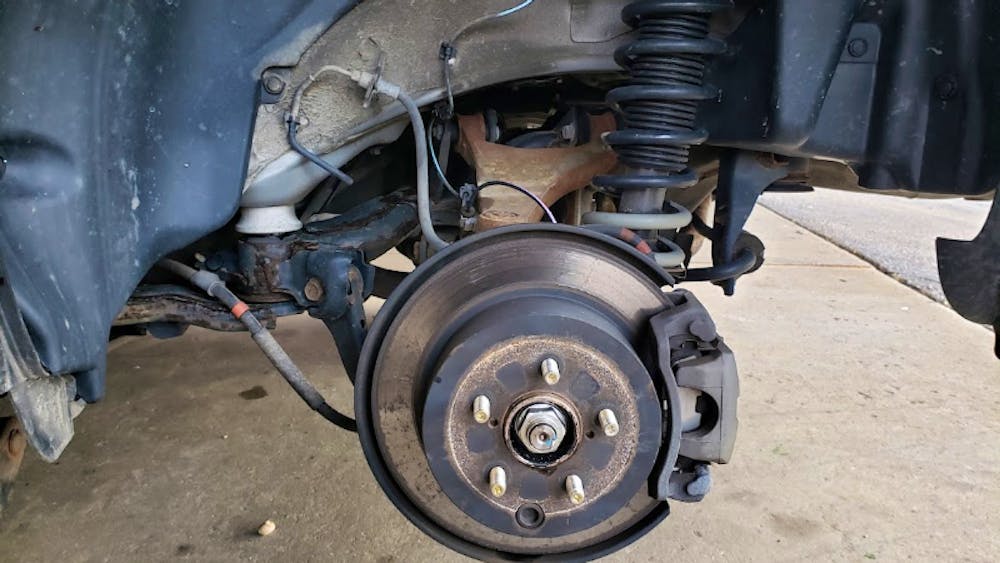Are you confused about the different types of brake rotors for your Ram 1500? If so, you’ve come to the right place. Here, you’ll learn all about what brake rotors to choose from and when it’s time to replace them, so you can confidently maintain your vehicle with ease.
The goal of this guide is to provide an overview of brake rotors for the Ram 1500 and explore when maintenance should be performed on these vital components. Rotors are a critical component in the braking system, working with the calipers and brake pads to make sure that your Ram 1500 stops safely and quickly.
It’s important for drivers to be aware of the ins and outs of their rotor system, as neglecting this part of maintenance can pose significant risks to both yourself and other road users. Read on to learn more about brake rotors, common problems associated with them, warning signs, and when to get them replaced.
Signs That Your Ram 1500 Brake Rotors Need Replacement
It is important to schedule regular maintenance visits to ensure your vehicle is properly taken care of. Part of this often entails periodic replacement of brake rotors, which can wear away due to everyday use and deterioration.
There are a few signs that you should pay attention to in order to determine if it is time for your Ram 1500’s brake rotors need replacing. Some indicators that signal that it’s time for a change include thinning of the rotors, high-pitched squealing when the brakes are applied, vibration or wobbling when stopping, visible grooves and dips on the rotor surface, and an increase in stopping distance.
Additionally, if your brake pads have begun to show signs of wear such as decreased thickness or pieces missing from the edges, it might be wise to consider investing in new rotors as well.

Brake pedal vibration or pulsation
If you experience a buzzing or pulsing sensation when you push down on your brake pedal, it’s possible your brake rotors are warped or damaged. This is caused by continuous heat buildup when the brakes are applied hard and/or repeatedly in a short amount of time combined with a lack of lubrication and ventilation.
This can lead to warping and cause the rotors to be out-of-round, resulting in the “pulsation” feeling as you press on the brake pedal. To alleviate this pulsing sensation, the warped rotors need to be replaced with ones that fit properly. If left unchecked, it can compromise the braking power of your vehicle as well as cause excessive wear on both the rotors and pads.
Squeaking or grinding noise
Is your Ram 1500 making an excessive level of noise when you apply the brakes? A squeaking or grinding sound can be an indication of either a loose brake pad or rotor disc. This type of noise is caused by the calipers clamping onto the rotor to slow the rotation, and often indicates that you need replacement brake rotors.
If this noise continues after checking and ensuring your brake pads are secure, then it’s time to check your rotors to determine whether they need replacing as well. If you’re unsure if your rotor is in need of replacement, look for these signs:
- Discoloration on the surface
- Deep “grooves” along the edge where contact has been made with other dragging components
- Warping or deformities in severe cases
Reduced braking performance
When performance from your brake rotors begins to decrease, it’s usually due to worn out or warped brake rotors. This is a common problem for all types of vehicles, but especially for the Ram 1500 with its heavier weight the brake pads are more likely to become worn out. Reduced performance can range from glazed pads with little stopping power, uneven braking surfaces which cause pulsation and vibration when pressing on the brakes, increased stopping distances, and noises such as scraping sounds or grinding when braking.
The way you drive also affects rotor wear – more severe use such as frequent hard stops and fast accelerations will cause even quicker wear of the brake rotors than normal usage. In addition, failure to perform regular maintenance such as checking fluid levels, adding more fluid if necessary and inspecting rotors for damage can cause accelerated rotor deterioration. Therefore it is important to have your brakes checked regularly by an experienced mechanic who knows how to inspect your brake system for needed repairs or maintenance adjustments.
Factors to Consider When Choosing Brake Rotors for Ram 1500
When considering brake rotors for a Ram 1500, there are many factors to consider. The size and weight of trucks like the Ram1500 require larger brake rotors than cars. Factors such as terrain, driving style, whether the truck is used for light commuting or heavier jobs, and how often brakes are used contribute to replacing them.
The type of terrain your vehicle will be driving on is an important factor to consider when choosing brake rotors for a Ram 1500. If operating in mountainous or hilly terrain with steep grades and sharp curves you’ll need slotted or drilled rotors for increased stopping power. For flatter terrain with longer straightaways vented or cross drill rotors offer more reliable performance over time with less heat buildup during braking.
The type of driving you do on your truck should be taken into account when purchasing brake rotors for a Ram 1500 as well – be sure to consider whether the truck will mainly seeing light commuting duty or if the truck will be used for heavier jobs such as hauling cargo, towing trailers, or frequent off-roading trips. Heavier duty braking applications require more frequent replacement of brake rotors than lighter duty applications due to greater heat buildup that can cause warping if not addressed regularly.
Finally, it is important to inspect your brakes regularly and replace worn components as needed as some manufacturers differ greatly in their brake rotor recommendations – rotor replacement frequencies for manufactured parts vary by brand and by vehicle load capacity so it’s best to consult with experts who have experience dealing with different types of brakes and vehicles when deciding when it’s time To replace your rotor components . While quality grade parts may cost more up front you can generally expect longer durability from these tougher parts that make them great investments in the long run When owning a large workhorse such as a Ram1500 it pays big dividends in terms of safety that you properly maintain its brakes so following these tips should make it much easier when determining what type of component you need next time you look at outfitting your trusty ride.
Vehicle compatibility
It’s important to remember that different vehicles require different brake components. Before making any changes to your vehicle or brakes, you should consult your vehicle’s owner’s manual. Knowing the make and model of your vehicle will help ensure that you get the right rotor for proper installation.
Brake rotors for the Ram 1500 use a specific rotor diameter dependent on the year, cab size, and engine type of the vehicle. Shims may be necessary for proper fitment as well. Also make sure it is designed for performance use if you plan on using it as a replacement or upgrade from stock rotors. Some aftermarket rotors are not designed to fit OEM calipers but are designed to work with a variety of aftermarket brands so make sure to check compatibility before buying one for your specific vehicle application.
Material and construction
Rotors for brake systems come in a few different materials and sizes. Most new rotors are made of iron with a layer of heat-resistant alloy coating that is applied to the pads. This material, also known as disc brake rotors, are held in place by wheel lug nuts and have a flat, circular shape which provides extra surface area to dissipate heat better when they come into contact with the brake pads.
Many brakes that rely on disc brakes will use ventilated rotors which are designed with channels to allow air flow. This type of rotor cools more quickly and prevents warping or damage caused by overheating during regular braking.
Other types of material used for rotors include composite materials such as carbon-carbon which is specifically designed for high performance racing when enhanced resistance to heat is required but weight must be kept to a minimum. Other materials chosen for performance-based needs may include ceramic and steel alloys as well as other combinations depending upon the application. Generally speaking, every vehicle comes with specific component specifications that must be followed when selecting replacement parts such as rotors.

Design and style
When it comes to brake rotors for a Ram 1500, there are two design styles: cross-drilled or slotted. Which type should you choose for your vehicle? Generally, it’s up to personal preference as long as the rotor is of good quality.
Cross drilled rotors offer better cooling, due to the increased surface area between the drilled holes, and can also handle more heat during braking applications. Slotted rotors provide more friction by “grabbing” onto the brake pads. Keep in mind that slotted rotors provide added performance at the expense of added trouble with dust and noise – they will generate more dust and be louder than cross-drilled rotors.
The best choice between cross-drilled and slotted depends on your vehicle’s requirements and personal preferences; ultimately, it is up to you. Keep in mind that choosing a high quality rotor will be key for ensuring efficient and powerful brakes that last for many miles.
Maintenance and Care for Brake Rotors
Proper maintenance and care of brake rotors is important not only to ensure safety and performance, but also to maximize the longevity of the brake system. Below are some key tips for regular and schedule maintenance of your Ram 1500’s brake rotors:
- Check your brakes and rotors regularly. The most important preventative measure you can take is ensuring that the brake system is functioning properly. Visually inspect your brakes and get them serviced professionally at least once a year.
- Monitor roadside conditions before braking. When driving in wet, icy, or other challenging road conditions, be sure to pay attention and slow down gradually before applying pressure to the brakes as this will reduce wear on the rotors and can help to prevent skidding or sliding on slippery roads.
- Clean brake dust off of the surfaces regularly with a soapy cloth followed by a rinse of clear water if necessary; this will avoid any build-up which can ultimately lead to increased wear on components like rotors over time if left unchecked.
4 Replace your rotors when necessary — when they have seen significant use or wear, it is highly recommended that you replace them with new ones for optimal braking performance.
Cleaning instructions
To properly maintain your brake rotors and keep them functioning efficiently it is recommended that you use a quality brake cleaner product for periodic cleanings. You should separate the rotors from the pads and wheels before attempting to clean them.
Begin by slowly rinsing the rotor with cool water from a garden hose, spray nozzle or pressure washer. Make sure not to use an overly powerful jet, as this could damage the rotor surface and damage the braking performance.
Once you have finished rinsing off the rotor, you can then continue with a specialized cleaner product made for brakes. Apply this cleaner using a soft cloth or lint-free towel, following all on-label instructions provided by the product’s manufacturer. Make sure to avoid easy contact with any moving parts as you are cleaning, as some cleaners may strip away protective coatings or layers if exposed too long.
Once you have finished cleaning your brake rotors using these gentle methods, make sure to rinse off any excess residue or debris before reinstalling them back onto your vehicle. This will increase their longevity and ensure that they remain in peak working condition for many miles to come!
Maintenance tips
To maximize the life of your brake rotors and keep them working effectively, it is important to perform regular inspections and use cleaning fluid to remove any dust and debris that may accumulate. Here are some tips for maintaining your rotors for the Ram 1500:
- Regularly inspect the condition of your brake rotors. Check for excessive wear, rust or pits in your rotor surface as these are all signs of potential problems down the line. If you notice any potential issues, it’s best to have them inspected by a qualified mechanic immediately.
- When you replace your brake pads, always replace them with properly sized parts that will fit snugly into their grooves on the rotor surface and ensure proper braking performance. Pressure-testing can help you make sure the “clamping power” is adequate so you get a smooth stopping experience each time.
- Use a gentle cleaning fluid when removing dust and debris from your rotors as anything too harsh can damage them further or reduce their maximum lifespan over time. Cleaning fluids should be applied with a soft cloth and then wiped off carefully afterwards with another clean cloth or paper towel – being careful not to “scrub” them harshly in one direction only.
- To help diagnose any potential issues during regular safety checks, use anti-vibration pads attached directly onto the backside of each rotor – this can help test its resistance from vibration due to uneven brake pad wear or corrosion of the hub itself over time.
- For added protection against rust accumulation on both sides of the brakes, consider using a wax-based protective coating specifically designed for rotor surfaces – this can also help reduce noise caused by wear over time as well as maintaining optimal heat dissipation when necessary during operation hours such as full loads or long-distance driving scenarios.
Common issues and how to fix them
Brake rotors have several general issues: warped rotors, scored/glazed/burned surfaces, and wheel bearing issues. Warping can occur when one side of the rotor is being used more than the other – usually a sign your brakes are unbalanced. If you detect an issue like this, you may need to replace your brake pads, as they may be worn unevenly.
Score and glaze on the rotor surface can also be due to an unevenly-worn pad or warped disc. To fix this, the surface must be squared up again through grinding or machining. You can also scrape off any build-up on the rotor with your hands or a hard brush before installation back into the vehicle — just make sure to wear gloves if doing so!
Wheel bearing issues are often caused by worn-out or damaged bearings that have been neglected for too long, and in many cases replacing them along with the rotors will ensure a smooth ride for years to come. If there is play in any bearings or if excessive force is required to turn them it is best to replace them as soon as possible since it could cause failure in other components further down the line. Finally, make sure to properly lubricate all parts during installation – keeping all moving parts running smoothly helps avoid future problems!

Conclusion
In conclusion, brake rotors are a crucial component of your Ram 1500’s braking system. When they become worn or damaged, they must be replaced to ensure safe, consistent braking. It is important to regularly inspect your brake rotors for wear and tear and to replace them as needed in order to maintain the overall optimal performance of your Ram 1500.
To begin the replacement process, you’ll need to purchase quality brake rotors that are designed for your specific vehicle model and which meet or exceed the manufacturer’s specifications. Additionally, you’ll need to ensure that your new brake rotors meet all necessary safety requirements before installing them onto your vehicle.
Finally, it is crucial to follow all manufacturers’ instructions when replacing the brake rotors on your Ram 1500 in order to guarantee the best possible performance.
FAQ’S
At what point should brake rotors be replaced?
Brake rotors should be replaced when they are worn beyond the manufacturer’s recommended minimum thickness.
How do you know if brake rotors are worn?
You can tell if brake rotors are worn by feeling for vibrations or pulsations when braking, hearing squeaking or grinding noises, or visually inspecting the rotors for grooves or cracks.
Should I replace all 4 rotors?
It is recommended to replace all 4 rotors at the same time to ensure even braking and prevent uneven wear.
Should I replace rotors with pads?
It is recommended to replace rotors with pads to ensure proper braking performance and prevent uneven wear.
What is the lifespan of a rotor?
The lifespan of a rotor can vary depending on driving habits and conditions, but typically ranges from 30,000 to 70,000 miles.
How many times can rotors be used?
Rotors can be used multiple times, but it is recommended to replace them when they are worn beyond the manufacturer’s recommended minimum thickness.
How long do brake rotors last km?
The lifespan of a brake rotor in kilometers can vary depending on driving habits and conditions, but typically ranges from 48,000 to 112,000 kilometers.
Which rotors last the longest?
High-quality, performance rotors made from durable materials such as ceramic or carbon fiber tend to last the longest.
Which rotors last longer?
Rotors that are properly maintained and used under normal driving conditions tend to last longer.
What can damage a rotor?
Rotors can be damaged by overheating, excessive wear, corrosion, or impact from debris on the road.
See Also :
- Best leveling kit for ram 1500
- Best synthetic oil for ram 1500 hemi
- Best exhaust for ram 1500
- Best tailgate assist for ram 1500
- Best mud flaps for ram 1500

